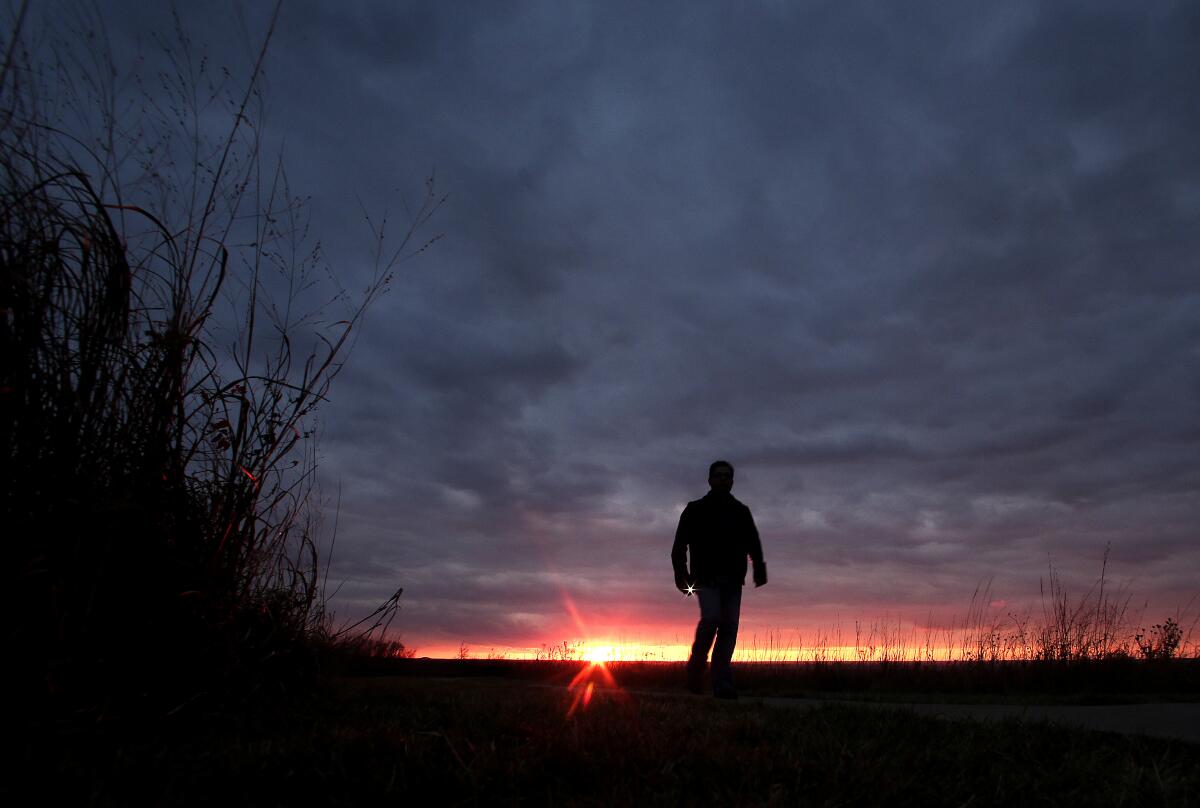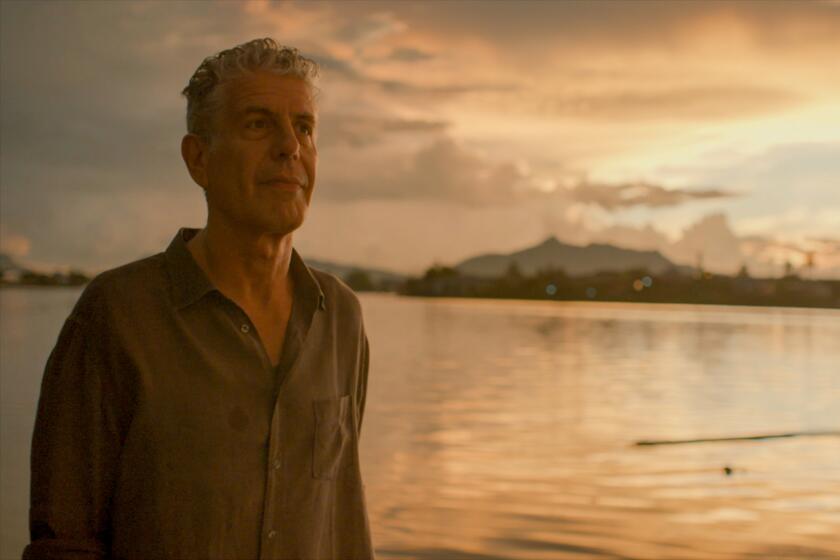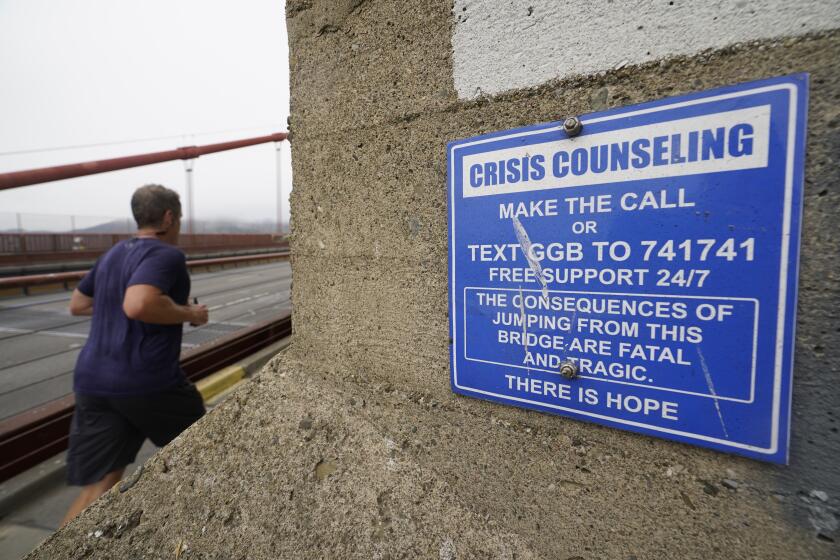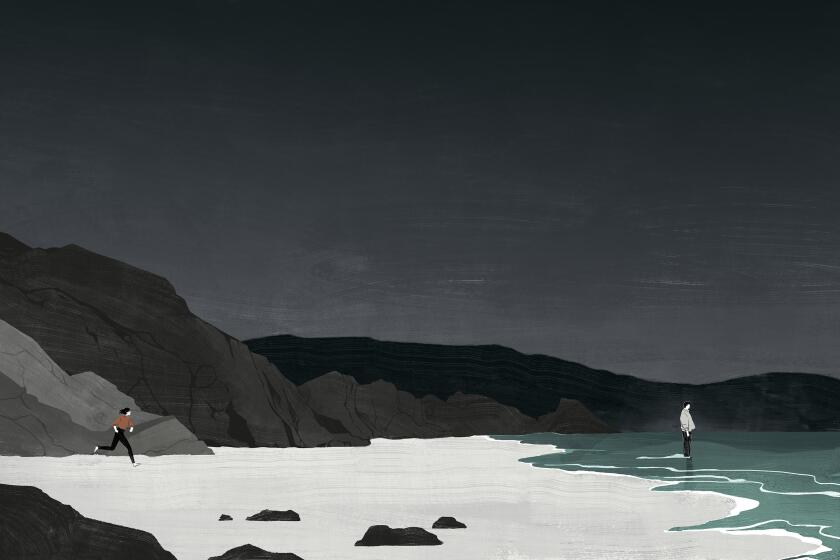Column: Advice for the suicidal from a philosopher who tried to kill himself 10 times

I wasn’t sure exactly what to expect when I opened philosophy professor Clancy Martin’s new book, “How Not to Kill Yourself: A Portrait of the Suicidal Mind.”
I’d been meaning to read it ever since I heard his interview in April with Terry Gross on NPR’s “Fresh Air,” and found myself both shocked and captivated by his story. With Suicide Prevention Month drawing to a close, the time seemed right to dive into this bedeviling topic.
Martin has tried to kill himself at least 10 times, the first time at age 6, when he ran in front of a bus. He has awakened in a hospital three times after suicide attempts, been interrupted by police twice, and has tried to die by drowning or hanging.
“Suicide is harder than it looks,” he writes. “It seems easy until you try it.”
The reason he never succeeded, Martin notes, is that he never used a gun.
A new book explores possible reasons for Bourdain’s death. Trying to place blame cheapens the death and struggles of those who’ve died by suicide — or tried to.
“How Not to Kill Yourself” is in part a memoir: It chronicles Martin’s addiction to alcohol, his three marriages, two divorces and his enduring quest to be a better father to his five children, along with his suicide attempts. But more than that, it’s a primer on literature about suicide, an investigation into whether there is such a thing as a “death drive” and a deeply empathetic advice book for people considering suicide and those who love them.
“If I have one crucially important piece of advice to offer in this book,” he writes, “it’s this: absolutely do not keep a gun in the house. If you have one, get rid of it immediately.”
Ambivalence has been his saving grace; you can want to live and die, too. “For the suicidally inclined person,” Martin says, “vacillation about whether one wants to live or die is the norm rather than the exception.”
Suicide is complicated and nuanced, but can be preventable.
He tells the story of Ken Baldwin, who survived a 1985 leap from the Golden Gate Bridge at age 28 and said afterwards, “I realized that everything in my life that I’d thought was unfixable was totally fixable — except for having just jumped.” Baldwin was pulled from the water with bruises, a collapsed lung and the newfound conviction that life was very much worth living.
“Once you start looking,” Martin writes, “you find that an astonishing number of people have been improbably blown back up from leaps off cliffs and miraculously survived falls from terrific heights. The universe likes to play such jokes on suicidal people.”
In the same way that few lives have been untouched by addiction, I’d wager that few have been untouched by suicide, either directly or indirectly. Who, after all, was not moved or puzzled by the death of Robin Williams, or of Anthony Bourdain?
My hope is that by thoughtfully exploring a topic fraught with stigma and misunderstanding, we can all better support our friends and family who experience depression.
It is one of the existential mysteries: Why do people who seem to have it all decide to end their lives? Why did poetry’s Richard Cory — ”richer than a king” and “admirably schooled in every grace” — “put a bullet through his head”? (For generations, English majors have confronted that conundrum. Simon and Garfunkel wrote a song about it.)
As you would expect from a philosopher, Martin cites great thinkers as he puzzles out why some people are bent on self-destruction, either by addiction or other harmful behaviors, which he calls “parasuicidal,” or by suicide itself.
“Thinking about killing oneself and addictive thinking have a lot more in common than is normally recognized,” Martin writes.
“Wanting to kill yourself is like an extreme version of the relief you find after drinking a few glasses of wine, and the pungent smell of yourself seems to drift off into the breeze. ... This theory is really just an elaboration of the Buddha’s idea that the desire for self-annihilation is among our most basic forms of suffering, or Freud’s idea that the desire for life and the desire for death are two sides of the same coin.”
There’s a new three-digit phone number for you to remember: 988. It’s a free suicide prevention hotline for anyone to use, and it couldn’t come soon enough.
I was not surprised to learn that women try to kill themselves three times more often than men, but men succeed more often than women because they tend to use guns.
But I did not expect to learn that middle-aged white men are the American demographic group most at risk for suicide, or that Black women are the group least likely to kill themselves.
Given the life challenges of Black women, their low suicide rate is often referred to as a paradox. To explain it, Martin quotes from the memoir of Pulitzer Prize-winning cultural critic Margo Jefferson: “One white female privilege had been withheld from the girls of Negroland. They had been denied the privilege of freely yielding to depression.”
One man’s death may not have been preventable, but understanding what led to it offers hope for others.
I don’t know who first said that suicide is a permanent solution to a temporary problem (credit often goes to Phil Donahue), but it’s an aphorism that has stuck with me, and something I have shared with many a depressed loved one over the years, without realizing that many thoughtful people think it’s an extremely unhelpful thing to tell a desperate person who may well be looking for a permanent solution to their pain, which is not temporary.
And that, in essence, brings me to Martin’s ultimate advice about how to stay alive. It’s his version of the Stoics’ argument that “the door is always open.”
Yes, the Stoics say, you have the absolute right to kill yourself, but don’t walk through that door just yet.
“After all,” Martin writes, “you can always kill yourself tomorrow. Take a breath, get some space: tomorrow isn’t here yet. And maybe you’ll find you can get through today.”
Suicide prevention and crisis counseling resources
If you or someone you know is struggling with suicidal thoughts, seek help from a professional and call 9-8-8. The United States’ first nationwide three-digit mental health crisis hotline 988 will connect callers with trained mental health counselors. Text “HOME” to 741741 in the U.S. and Canada to reach the Crisis Text Line.
More to Read
A cure for the common opinion
Get thought-provoking perspectives with our weekly newsletter.
You may occasionally receive promotional content from the Los Angeles Times.

















